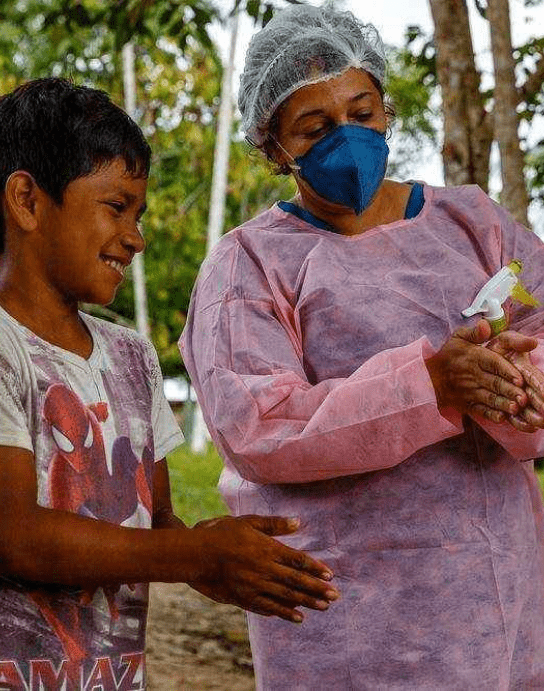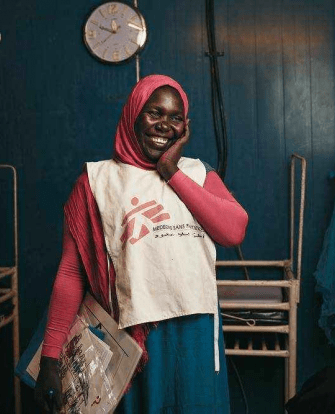The deadliest Ebola outbreak on record killed more than 11,300 people and infected nearly 30,000 in West Africa from 2014 to 2016. Though Ebola was not new—it was first identified in 1976—such a massive outbreak of the viral disease was unprecedented.
Doctors Without Borders/Médecins Sans Frontières (MSF) immediately launched an emergency response when the outbreak was confirmed in Guinea, and later expanded operations to Sierra Leone and Liberia as the virus spread, but no antiviral treatments or vaccines existed at the time. We had few tools with which to fight such an enormous outbreak.
The lessons learned during the response have helped to inform the development of new facts, strategies, and treatments to tackle new outbreaks of Ebola—and in many ways changed MSF's approach to treating the virus. On the 10-year anniversary of the outbreak, renowned Ebola expert Dr. Michel Van Herp looks back at the biggest Ebola outbreak ever and answers five key questions.Why was this Ebola outbreak different than others?
Never had Ebola outbreaks happened in so many countries at the same time. The virus spread in Guinea, Sierra Leone, and Liberia, but there were also Ebola cases in Senegal, Mali, and Nigeria. It was also the first time that Western countries, like Italy, Spain, the United Kingdom, and the United States, had cases of Ebola. The scale of this epidemic was absolutely unheard of. When it was finally over in March 2016, more than 28,000 people had been reported to be infected with Ebola, of which 11,000 died. Before this epidemic, the largest Ebola outbreak had 425 infected people! Everybody, including MSF, was completely overwhelmed by this outbreak.Ebola Outbreak Timeline: 2013
Was the response to this Ebola outbreak also different?
For almost six months, the world tried to ignore this Ebola outbreak. Only by the end of the summer of 2014 did other governments and aid organizations finally start to help. At the time, there were no treatments for Ebola; patients would be admitted to an Ebola clinic, mainly to avoid infecting other people. In earlier outbreaks, a family member could accompany the patient. However, in 2014, to admit the huge number of patients, very big structures had to be built. The safety procedures had to be extremely strict, and it was impossible to allow family members. This large-scale approach scared patients and their families. By the end of 2014, dozens of aid organizations, most of them inexperienced with Ebola, were involved in different aspects of the response. Coordinating all those organizations in multiple places in multiple countries was extremely challenging. Some governments turned to authoritarian tactics to force patients and their families into compliance, which scared them even more. The focus on the patients and their families that had been so key to contain previous outbreaks was completely lost in the enormous machine that the Ebola response had become.
How did the Ebola response begin 10 years ago?
When we read the reports of people dying of an unknown disease in Guinea early in 2014, we thought this was probably an outbreak of Ebola, even if that disease was extremely rare in West Africa. We sent our Ebola teams. At that time, MSF was one of the very few organizations with experience in Ebola outbreaks. But it became clear that this outbreak had been slumbering for months and was already present in more places than anybody was used to dealing with.
The outbreak happened in a place in the world where no one expected Ebola, in an area that didn’t interest the authorities, and no one was ready to deal with it. It took governments, United Nations agencies, and aid organizations a very, very long time to take the outbreak seriously. MSF frantically rang the alarm bell multiple times, but nobody seemed to listen.
2014

Did we learn anything from the Ebola epidemic?
Many of the things that we consider 'lessons learned' are things we knew before 2014 but that were forgotten. But we have also learned new things. We learned how we could take a simple, oral swab of deceased people, to test whether they had died of Ebola. This allowed us to understand the dynamics of the epidemic better. We also learned from organizing the clinical studies, so we were faster during the 2018 outbreak in the DRC. In DRC, we found treatments with antibodies for the Zaire strain of Ebola.2015-2016

What needs to be done to prepare for future Ebola outbreaks?
There are very concrete things we can improve for a future Ebola outbreaks. We should again allow a family member to accompany a patient in the Ebola clinic, since we can protect them better now with vaccination and drugs for pre-exposure prophylaxis. Very sick Ebola patients should receive an antibody treatment much faster. Antibodies can be real lifesavers, and the sooner a patient receives them, the better they will work. We must adapt our models to make the best use of this option. And we need to continue looking for other treatments. The Ebola virus can provoke an inflammatory response that is so strong that it can kill the patient. If we had a drug to calm down that inflammatory response, we could save more Ebola patients. We also must improve the follow-up of Ebola patients after their recovery. Ebola can linger in the brain, the eyes, and the testes of survivors. Another type of drug, antivirals, can clean up the virus from these places. Six months after their full recovery, Ebola survivors should get a shot of the Ebola vaccine to give their immune system another boost. In the last 10 years, we have certainly made errors when we responded to Ebola outbreaks. Some errors were forced, some were unforced. But in general, we clearly have made progress, and there are good options for even more progress. The odds for a patient with Ebola in the next outbreak will be much better than they were 10 years ago.
Facts about Ebola
Human-to-human transmission occurs through contact with bodily fluids of an infected person, including blood and secretions. For this reason, health care staff and all others in contact with an infected person must wear properly designed protective clothing to avoid becoming infected.
In pregnant women, the virus may be transmitted from mother to baby in utero, during delivery, or through contact with maternal body fluids (including breast milk) after birth.
Ebola is not spread through air or water, or from newly infected people who are not yet showing any symptoms.
During an outbreak, Ebola virus can spread quickly within health care facilities. Proper infection control in health centers is therefore vital to reduce risks for other patients, caregivers, and health workers. Those caring for infected patients must wear personal protective equipment (PPE). Protective gear must be also worn to safely bury Ebola victims, as the virus can be transmitted by touching the bodies of those who have died from the disease.
Without proven, effective treatments specific to Ebola, until recently treatment has been limited to supportive therapies, starting with medications to reduce pain, fever, vomiting, and diarrhea. Other treatments focus on hydration: Since patients lose so much fluid, keeping them hydrated is crucial to avoiding shock and other severe consequences. If patients are alert, able to participate in their care, and are not vomiting, oral rehydration drinks can be sufficient to replenish fluids. Those with severe diarrhea or vomiting, or who cannot drink enough liquid, receive intravenous fluids. Anti-anxiety drugs can also help patients in distress, while vitamins and therapeutic foods are also provided. Psychological support is also provided to help patients and their families cope with a frightening, serious illness, often while simultaneously facing the illness or loss of other family members from Ebola.
But this limited set of tools may soon expand. Four investigational drugs are now being utilized in the DRC outbreak, both as part of a clinical trial and under "compassionate care" protocols (although not all treatments are available at all Ebola treatment centers). They fall into two categories: direct antiviral drugs and immune therapies based on monoclonal antibodies to Ebola. Each of these treatments has distinct advantages and disadvantages involving ease of use and feasibility (injection or slow infusion; frequency of treatment needed; refrigeration requirements). Patients and families are counseled that their effectiveness is not yet proven prior to signing consent for use.
How you can help
Not everyone can treat patients in the field. But everyone can do something.
Some humanitarian crises make the headlines—others don’t. Unrestricted support from our donors allows us to mobilize quickly and efficiently to provide lifesaving medical care to the people who need it most, whether those needs are in the spotlight or not. And your donation is 100 percent tax-deductible.




